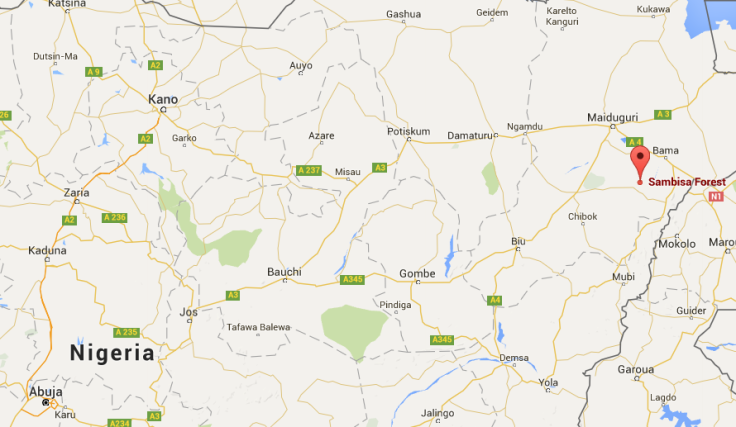Inside Sambisa Forest: The last Boko Haram stronghold and possible location of Chibok girls
When the first girl kidnapped by Boko Haram terrorists from Nigeria's Chibok village in April 2014 was found in Sambisa Forest recently (May 2016), suspicions arose that the other 218 girls abducted on the same night could be found in the same location.
Amina Ali, 19, was rescued by a member of the army-backed vigilante group Civilian Joint Task Force (JTF).
She is one of the 219 schoolgirls kidnapped by the terrorists as they were attending evening school in Chibok, in the restive Borno state, on 14 April 2014.
A few days later, Serah Luka – believed to be another one of the girls taken from Chibok – was reportedly found by the army during clashes between troops and the terrorists in Borno.
Sambisa Forest: Location and wildlife
The forest is located in northeastern Nigeria, 37 miles southeast of Borno's capital Maiduguri. The reserve covers an area of 322 miles and occupies parts of Borno, Yobe, Gombe, Bauchi and Kano states. It is part of the Sudanian savannah and the Sahel Acacia savannah.
Once a game reserve used for safaris during the Colonial era, it is home to several wildlife species including lions, leopards, gazelles, antelopes and elephants. However, the forest has a relatively "low species richness", which 2010 research linked to the high incidence of poaching, deforestation for fuel wood, agricultural cultivation and lack of perennial water.

Boko Haram's stronghold
The forest was abandoned in 2013 as it had become one of Boko Haram's majour strongholds after the group's violent insurgency erupted in 2009.
Upon taking office in May 2015, former general and now President Muhammadu Buhari vowed his administration would end terrorism in the country.
After relocating the military headquarters to Maiduguri and securing an 8,700-troop-strong regional offensive – comprising soldiers from Nigeria, Niger, Chad and Benin – the leader announced in September the terrorists "had been limited to the Sambisa forest".
The offensive in the forest, which is still ongoing, was temporarily halted due to the high presence of mines placed by Boko Haram, which resulted in the death of at least one soldier and two JTF members in April 2015.
Strategic position
Boko Haram uses the Sambisa Forest as a refuge after it carries out attacks in northeastern Nigeria and northern Cameroon. The terrorists also use the location as a hideout from troops and vigilantes.
Counterterrorism expert David Otto believes Sambisa represents "a fortress" for the terrorists. "Respective governments within the lake Chad basin that share borders with the forest have abandoned the reserve together with the people who live along and within villages in the forest," he told IBTimes UK. "It is a huge strategic vacuum and an ungoverned space that Boko Haram has now filled. It was and continues to present the golden opportunity for Boko Haram to stay alive."
Otto, who is the CEO of UK-based global security provider TGS Intelligence Consultants, added that some Boko Haram members have given the military the illusion they live in the forest. "It's a decoy strategy, the security sources will be fully outstretched if they focus on Sambisa Forest. The forest is not a habitable environment for long-term. It is more or less a battle ground, training ground, and where they hide most of their arms and ammunitions," he explained.
"Most Boko Haram militants, especially the emirs or commanders, live within communities out of Sambisa – across Nigeria and neighbouring states."
Nigeria up close: Check out our Flipboard magazine
© Copyright IBTimes 2025. All rights reserved.






















